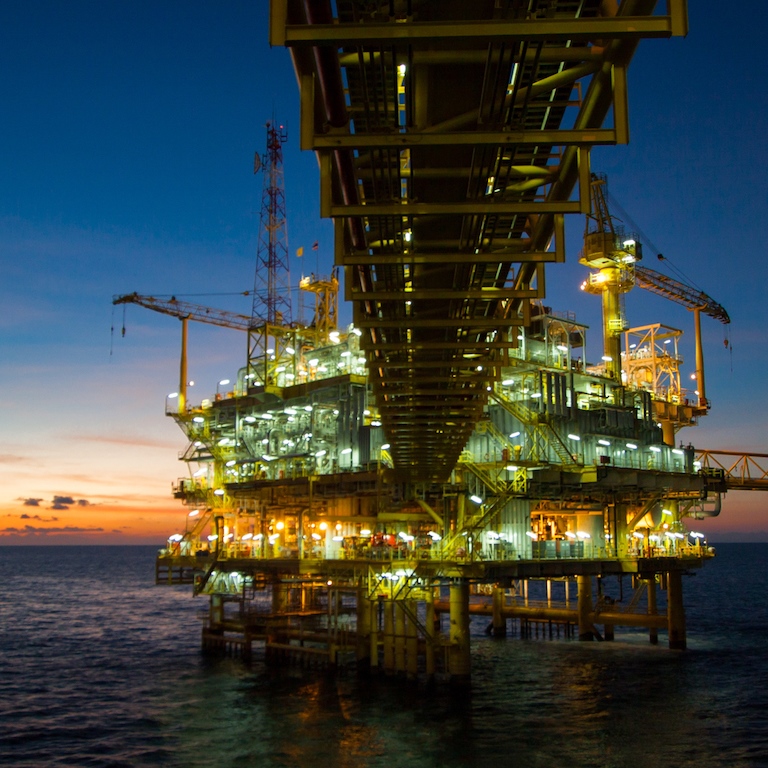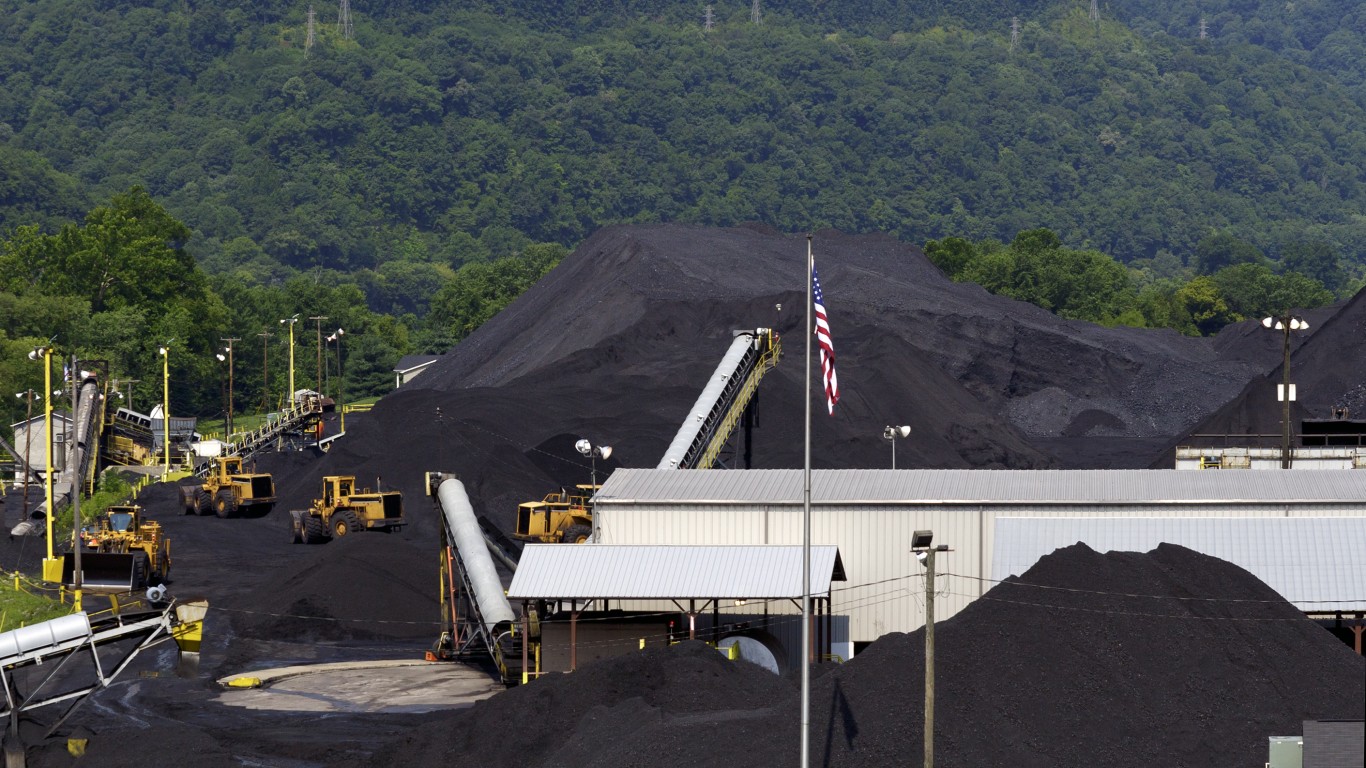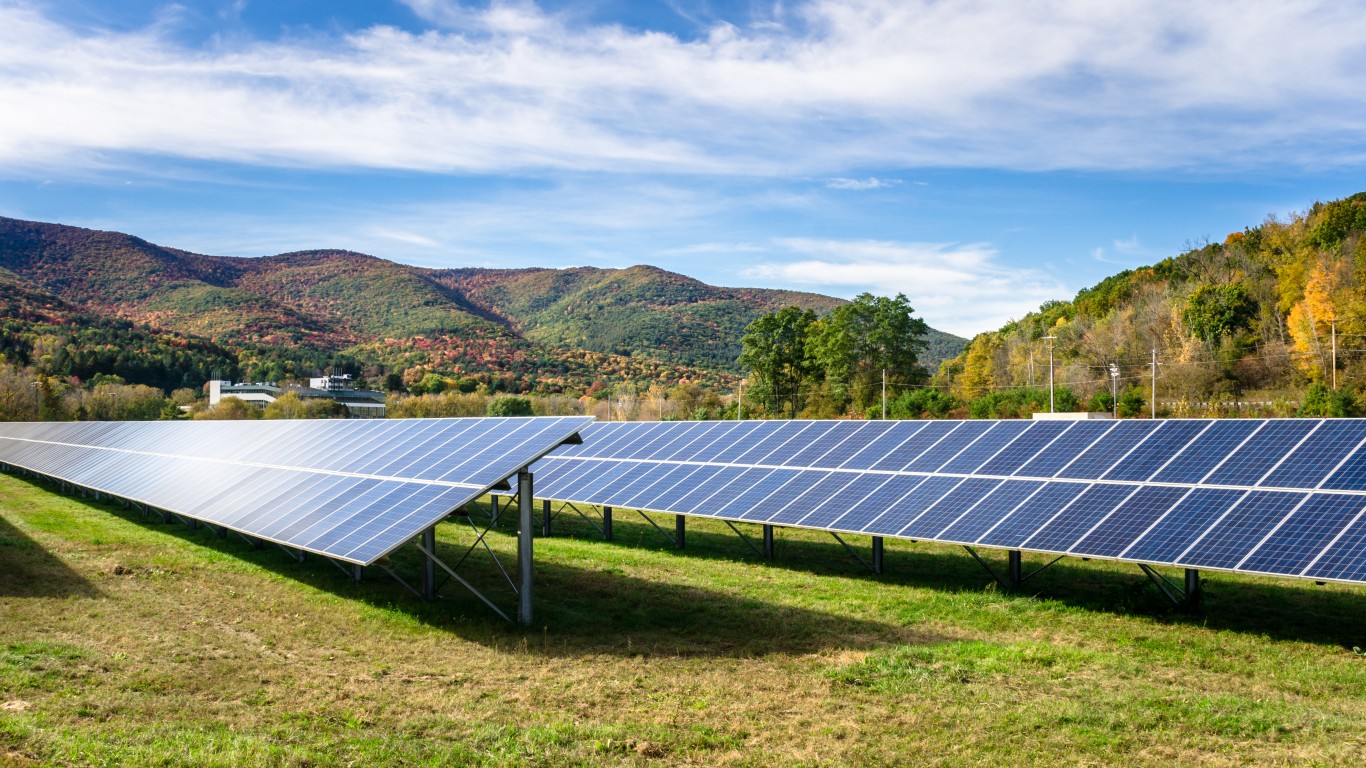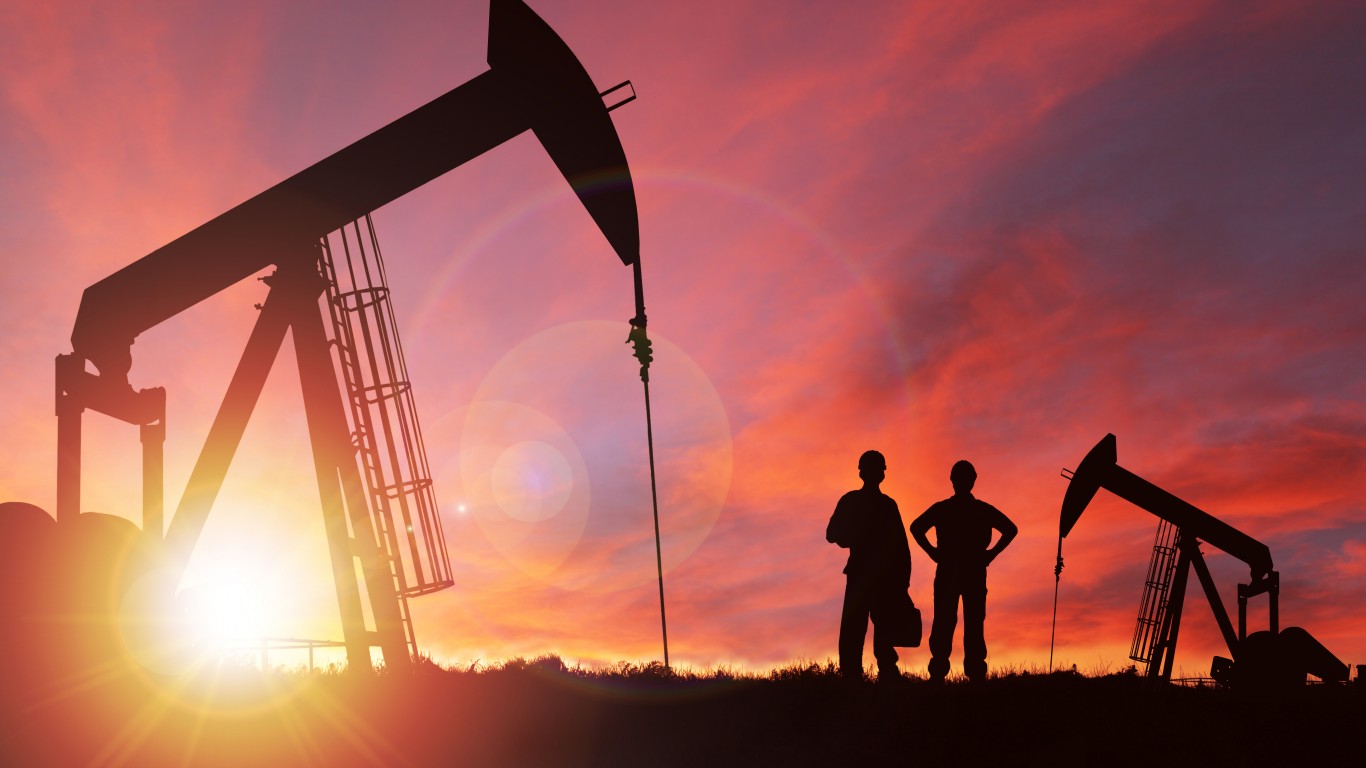
When Chesapeake Energy Corp. (NYSE: CHK) reported third-quarter 2017 earnings before markets opened Thursday, the oil and gas exploration and production company posted adjusted earnings per share (EPS) of $0.12 on revenues of $1.94 billion. In the same period a year ago, the company reported adjusted EPS of $0.09 on revenues of $2.28 billion. Third-quarter results also compare to the Thomson Reuters consensus estimates for EPS of $0.11 and $2.07 billion in revenues.
Revenue dropped 15% year over year, likely as a result of a 15% decrease in production volume that was largely driven by asset sales. Chesapeake’s debt balance at the end of the quarter was $9.8 billion, down from the December 2016 total of $10 billion.
The company raised its full-year estimate of capital spending from a range of $2.1 billion to $2.3 billion to a new range of $2.3 billion to $2.5 billion, including $200 million in capitalized interest.
Chesapeake produced 8 million barrels of crude oil the quarter, compared with 8 million in the same period last year and 8 million in the second quarter of this year. The average realized price in the third quarter rose by 68 cents sequentially to $52.33 and from $45.24 in the year-ago quarter. Natural gas production rose by 10 billion cubic feet sequentially, but it fell by 49 billion cubic feet year over year to 219 billion cubic feet. Year over year, gas prices rose by $0.39 per thousand cubic feet but were $0.19 lower than in the first quarter.
Production growth for the full year continues to be forecast in a range of down 1% to up 1%. Based on October 30 strip prices, Chesapeake expects its oil hedges to add $2.61 per barrel to its revenues. Natural gas hedges are forecast to have no impact and NGL hedges are expected to cut $0.20 a barrel from revenues. Interest expense is expected to rise to $2.05 to $2.15 per barrel of oil equivalent production.
Analysts are calling for fourth-quarter EPS of $0.21 per share on revenues of $2.25 billion, as well as EPS of $0.72 per share on revenues of $9.44 billion for the full year.
CEO Doug Lawler said:
As we look toward 2018, our priorities remain unchanged as we focus on further improving our balance sheet, increasing our margins and driving toward cash flow neutrality. While we have not announced details regarding our 2018 capital program, we will maintain a disciplined approach that provides the flexibility necessary to respond to changes in commodity prices. As of today, we anticipate spending less capital in 2018 than 2017 and, given our asset quality and industry-leading capital efficiency, we expect to deliver flat to modest production growth on a lower capital expenditure.
The average production cost in the second quarter was $3.03 per barrel of oil equivalent, up from $2.92 sequentially and up from $2.80 year over year.
The good news for Chesapeake is that operating cash flow rose from $214 million a year ago to $337 million. Sequentially, operating cash flow rose by $21 million. Now if the company could just shave its interest expense per barrel of oil equivalent from $2.26 to something closer to the $1.20 per barrel it posted in the third quarter of 2016.
The combination of increased costs, fewer assets and rising interest expense presents the company with an existential problem that may turn into a crisis. Shares have tumbled 44% this year, and today’s report won’t turn that around.
Chesapeake’s shares traded down about 5% Thursday morning to $3.72. They have a 52-week trading range of $3.41 to $8.20. The consensus target price for the shares was $4.64 before this report. The highest price target prior was $8.00 a share.
The Average American Is Losing Their Savings Every Day (Sponsor)
If you’re like many Americans and keep your money ‘safe’ in a checking or savings account, think again. The average yield on a savings account is a paltry .4% today, and inflation is much higher. Checking accounts are even worse.
Every day you don’t move to a high-yield savings account that beats inflation, you lose more and more value.
But there is good news. To win qualified customers, some accounts are paying 9-10x this national average. That’s an incredible way to keep your money safe, and get paid at the same time. Our top pick for high yield savings accounts includes other one time cash bonuses, and is FDIC insured.
Click here to see how much more you could be earning on your savings today. It takes just a few minutes and your money could be working for you.
Thank you for reading! Have some feedback for us?
Contact the 24/7 Wall St. editorial team.
 24/7 Wall St.
24/7 Wall St.


